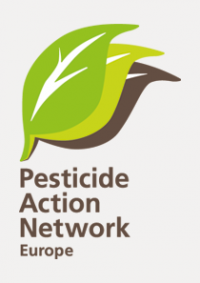To: Members of the PAFF committee – Section "Phytopharmaceuticals - Legislation"
Subject: EU Standing committee on pesticides (PAFF 21/22 October) – insecticide Cypermethrin – Calling upon Member States to oppose the European Commission’s renewal proposal as candidate for substitution
Dear Members of the Standing Committee PAFF,
On 21/22 October, at the EU Standing committee on pesticides (PAFF) you will be invited to vote on the European Commission proposal for a renewal of approval of the active substance Cypermethrin as a candidate for substitution (agenda B.02). However, the substance does not meet the legal requirements to be re-approved according to Article 4(1) of Regulation (EC) No. 1107/2009 due to its well-demonstrated endocrine disrupting properties. In accordance with the above provisions, we urge you to vote against the renewal proposal of Cypermethrin to exclude any contact to humans.
Already in 2016, based on the industry dossier, the EU Joint Research Centre concluded that Cypermethrin met all three conditions for being classified as an endocrine disrupting substance. There was clear evidence for in-vitro mechanistic endocrine effects (sexual hormones, thyroid gland, estradiol synthesis, mRNA expression), for adversity in an intact organism (fertility, development offspring, reproduction), and for a plausible link between those two (altered hormone levels and expression linked to adverse effects on reproduction). Point II 3.6.5 Annex II of Regulation (EC) No. 1107/2009 makes it clear that “contact to humans is excluded”. Knowing that these effects have been observed, even in industry studies, makes renewal of Cypermethrin a clear violation of EU law.
The outcome of industry studies is in line with the numerous independent peer-reviewed studies published on Cypermethrin. We just highlight a few research findings. Singh 2020 (attached) demonstrates adverse effects of Cypermethrin in female rats on reproduction and developmental anomalies. Those anomalies were even passed on to the second (F2) generation. Hormone levels and receptors were altered during exposure, which make Cypermethrin a transgenerational toxin! Wang 2021 (attached) discusses the mechanism of male reproductive toxicology of Cypermethrin. The substance induces Sertoli cell apoptosis (a cell in the testis that helps producing sperm). Jin 2011 (attached) reports on Cypermethrin-induced endocrine disruption in male mice. The review of Marettova 2017 (attached) points at the wider group of pyrethroids with neurodevelopmental, reproductive, and immunological effects that may result following exposure to some pyrethroids at levels below those that induce overt signs of neurotoxicity. Pyrethroids are endocrine disruptors that reduce steroid hormone levels and cause reproductive damage. Cypermethrin is among the pyrethroids causing the most severe damage. According to Article 8(5) of Regulation (EC) No. 1107/2009, independent literature should be added to the substance dossier. Hence, these studies should be considered as the latest available scientific knowledge.
The European Food Safety Authority (EFSA) only concluded in its 2018 peer-review to a “data gap” on Cypermethrin’s endocrine properties, which is of concern. With available data from both industry and independent studies demonstrating endocrine-related adverse effects, there should be no data gap. These conclusions only reflect on our observation regarding EFSA’s long pattern of obstructing and delaying the EU legislation on endocrine disruption. We urge you to reject EFSA’s, which puts the profits of industry above the protection of European citizens.
The fact that Cypermethrin is an endocrine disruptor means it meets the cut off criteria set in Article 4(1) and point 3.6.5 of Annex II of Regulation No 1107/2009, which should lead to a ban.
In addition, Cypermethrin is known to be highly toxic to bees. The lack of proper guidelines would allow for the continuation of killing our bees with Cypermethrin, including the wild bees and insects that provide such an essential role in our ecosystems.
Finally, we note that the PAFF committee is actually concerned about the effects of Cypermethrin on surface waters. However, the proposed mitigation measures are unrealistic and only designed to ‘save’ the pesticide rather than preventing water contamination.
We respectfully ask you to start a discussion on the endocrine properties of Cypermethrin under the light of the important scientific evidence, as well as the existing legal obligations of the European Commission, and to oppose the renewal of Cypermethrin.
Yours faithfully,
Hans Muilerman
Chemicals Coordinator
PAN Europe
On the behalf of:
European/International NGOs
- Health and Environment Alliance (HEAL)
- Health and Environment Justice Support (HEJSupport)
- Pesticide Action Network (PAN) Europe
National NGOs
France
- Générations Futures
- Réseau Environnement Santé
Germany
- Pesticide Action Network (PAN) Germany
Portugal
- Associação Sistema Terrestre Sustentável (ZERO)
Spain
- Confederación de Ecologistas en Acción
The Netherlands
- Tegengif
